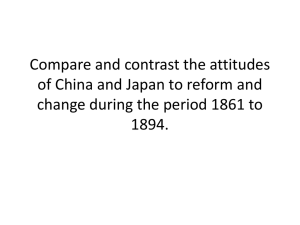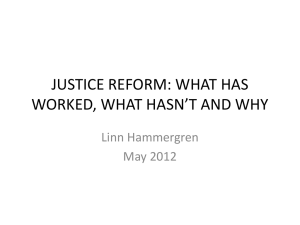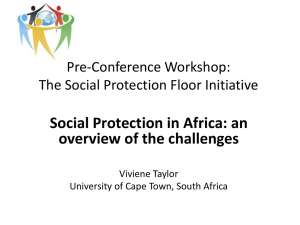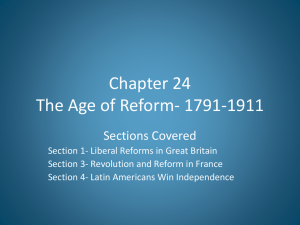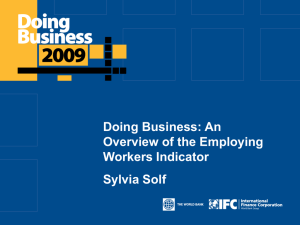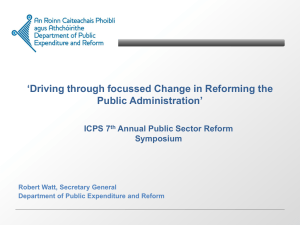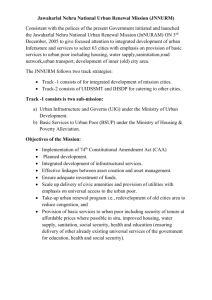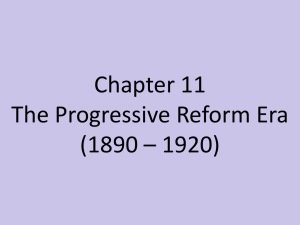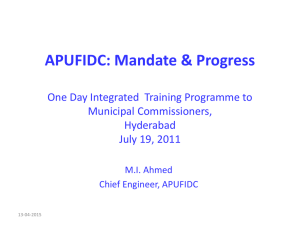Reforms - Crisil
advertisement
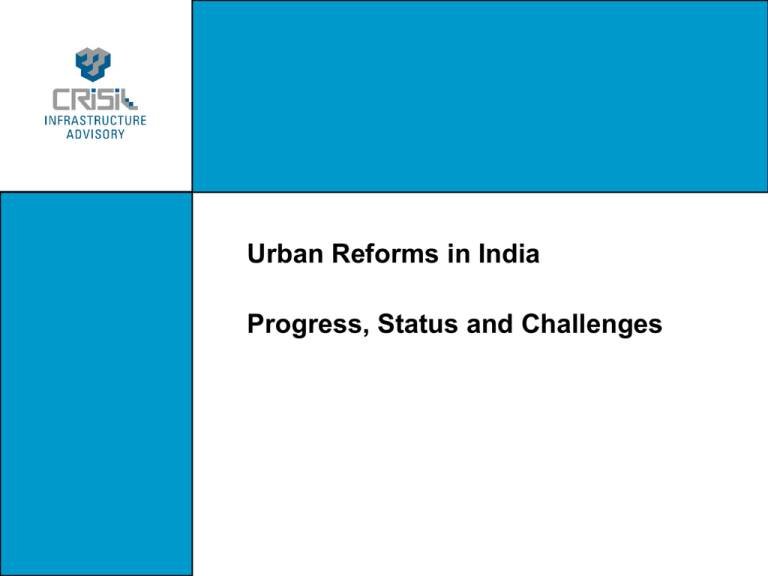
Urban Reforms in India Progress, Status and Challenges Reform timelines Constitutional Amendment Local initiatives URIF JnNURM reform agenda Way Ahead? JnNURM era Late 90s and early 2000s Early 90s 2. Constitutional amendment What has worked and what hasn’t Stated progress is impressive, real issues are hidden Regular conduct of elections Reservation of seats Constitution of local bodies Setting up MPC Setting up DPC Setting up ward committees Constituting SFCs Transfer of water supply Transfer of urban planning Transfer of 12th schedule functions 20% 30% 40% 50% 60% 70% 80% 90% Percentage of urban population whom reforms have covered 4. 100% Electoral styles differ • Mix of styles of electing the Mayor • Vastly differing powers of Standing Committee Elected Mayor Mayor in Council Nominated Mayor Mayor in Council Elected Mayor Standing Committee Nominated Mayor Standing Committee 5. Real functional empowerment Single agency All functions + Planning + Transport Dominant role. All key functions ULB is Dev Authority also Strong presence, some roles overlap Solid Waste Small Roads Dev authority active Minimal role for ULB Solid Waste Small Roads Dev authority active 6. Mumbai has a dominant local body as well as strong parastatals SFC Framework Global share Assigned revenues Octroi compensation + assigned revenues Salary grants + Revenue grants 7. Magnitude of transfers to local bodies Transfers to local bodies (per capita) ------------------------------------------------Revenue receipts of the State (per capita) 0%-5% 8. 5%-10% 10%-20% >20% What has worked and what hasn’t What has worked • Compliance with the Letter What hasn’t worked • Compliance with the Spirit • Willingness of States to figure out the details • Enforcement Constitutional amendment created hope of reforms Without the purchasing power to ensure compliance, results were unimpressive 9. Local initiatives What has worked and what hasn’t Mid 90s to early 2000 • Reform momentum was largely State and local body driven • Key areas of reforms – Accounting reforms – Revenue reforms (largely property tax) – E Governance – Solid waste management – PPPs and community partnerships 11. Compiled from around 200 initiatives studied by CRISIL under the CRISIL Awards for Excellence in Municipal Initiatives (2002-2007) What has worked and what hasn’t What has worked What hasn’t worked • Enthusiasm for reforms at local Govt level • Going beyond the Commissioner’s commitment • Effective in a new area (such as E Gov) or as a response to compulsion (revenue reforms, solid waste) • Not effective in systemic changes Sheer variety and number of local bodies ensured a reform momentum Enthusiasm at local level cannot match upto the magnitude of changes required in the sector 12. JnNURM driven What has worked and what hasn’t What has worked and what hasn’t What hasn’t worked What has worked • “Mandatory” is often effective – State level legislative changes • Won’t ask, won’t tell (hides poor implementation) – E.g. Cost recovery, accounting reforms • Change of direction is easier – E.g., Bus based, 24 X 7, PPP • Capacity and willingness to implement details – E.g., E Governance, City level planning Purchasing power makes a difference Belling the cat is an effective role You get only as much as you demand 14. Reform timelines Constitutional Amendment Local initiatives URIF JnNURM reform agenda Way Ahead? JnNURM era Late 90s and early 2000s Early 90s Hope without purchasing power 15. Enthusiasm without structural solutions Purchasing power can work Next steps in reforms – structural issues Real democratic governance Unitary body for accountability ULB, MPC Full devolution of all core functions Define core services that have to be assigned Mayor in council Vs Standing Committee Real devolution - role of parastatals, Planning authorities Direct Vs Indirect elections Fragmentation at State Government Where does UT belong? Proportionate financial powers Style of SFC devolution Autonomy of institutions Comparability of shares Unitary body for accountability Next source of revenue for cities Meaningful citizen participation Real estate linked VAT/ Cess – Consumption linked 16. Working and accountable institutions Regulation Reforms – What can work • Key structural issues (electoral power, functional domain) – The local body system will not have the appetite to change these – Purchasing power of the next reform programme can help • Accelerating decisions at cross-roads (PPP, revenue model, leverage) – Making these inevitable can help – The process of reform programme can smartly address this • Governance solutions (citizen participation, accountability) – Current capacity is weak, enforcement may not succeed – Thorough planning is the only preparation, it can be a long haul 17. Thank You sramanujam@crisil.com CRISIL Risk and Infrastructure Solutions Limited A Subsidiary of CRISIL Limited, a Standard & Poor’s company 19. www.crisil.com

